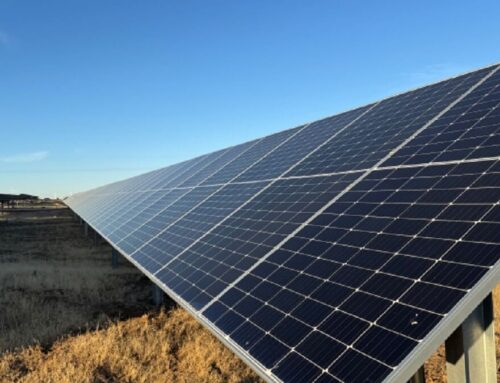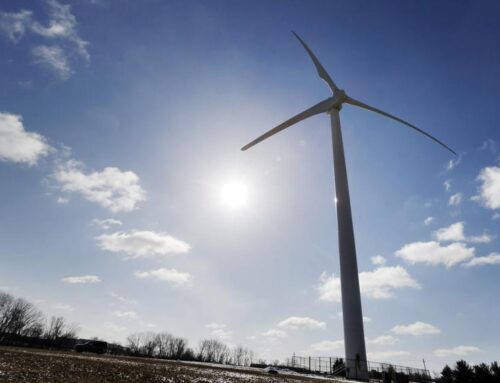A Clean Energy Future Is Unstoppable
January 1, 2025
This year’s national election results present us with a mind-boggling disconnect when it comes to climate change. Global carbon emissions — predominantly from burning coal, oil and gas — are reaching record highs. The year newly past, 2024, is expected to be the hottest in recorded history. A warmer planet ensures more deadly and destructive heat waves, storms, floods and droughts unless we quickly transition away from fossil fuels. Yet voters just elected leaders who deny the reality of climate science and plan to ramp up fossil fuel production and use for years to come.
Santa Barbara County stands out against the national results. Here voters elected leaders who are actively working to transition us from fossil fuels to clean energy. By significant margins we re-elected climate activists like Salud Carbajal to represent us in Congress, and Gregg Hart and Monique Limon to represent us in state legislatures. Our city and county governments have adopted Climate Action Plans that are effectively moving our communities towards a clean energy future. So, for us, the disappoint and frustration are even more deeply felt.
It may seem that political forces have rendered the transition from fossil fuels to clean energy insurmountable. However, much stronger economic forces and, indeed, our own local experiences, are showing that a clean energy future is unstoppable.
Worldwide, within five years, the International Energy Agency, estimates there will be10 times as many electric cars on the road; the share of global electricity generated by renewables will reach 50 percent; electric heat pumps will be outselling fossil fuel boilers globally; and three times as much investment will be going into new offshore wind projects than into new coal- and gas-fired power plants.
Wind and solar are now the cheapest sources of energy in the world. Even in China and India they are cheaper than coal.
President-elect Trump and Republican leaders in Congress and around the nation have made their intentions clear. They have allied themselves with the fossil fuel industry. “Drill, baby, drill” is now a Republican Party mantra. Trump has a long history of making false statements about climate science and renewable energy. He has announced a series of Cabinet choices who have misrepresented the reality of climate change. His pick for Energy secretary, oil and gas services executive Chris Wright, has falsely asserted that “there is no climate crisis” and “there is no such thing as clean energy or dirty energy.”
Although its decline is on the horizon, the fossil fuel industry continues to be a powerful financial and political force. Its alliance with right-wing governments will temporarily delay the transition to clean energy. But economics is proving to be more powerful than politics.
Our world is in the early stages of a generational shift toward a new and better energy system. John Podesta, U.S. climate envoy, says, “It’s becoming clear that we’re never going back to the dirty, fossil-fueled economy of the past.” UN General Secretary Antonio Guterres said in November, “The clean energy revolution is here. No group, no business and no government can stop it.”
Many experts say it will be the economics of clean energy that defines the future of the planet — and how developing countries choose to meet their growing electricity demands. “What happens in emerging and developing economies in the next decade in some sense is the whole ballgame,” said Jason Bordoff, founding director of the Center for Global Energy Policy at Columbia University. Here are some signs of hope from around the world, as reported by The Progress Playbook:
· In South America renewables covered 82 percent of Chile’s electricity needs in November; Uruguay’s economy ran on 100 percent renewable electricity for 10 straight months; and renewables covered more than 90 percent of Brazil’s power requirements in 2023.
· In Africa, Kenya generates more than 90 percent of its electricity from clean sources, including geothermal power plants, and it plans to reach the 100 percent mark by 2030. South Africa’s High Court has ruled that the country can’t open new coal plants because they would violate citizens’ rights to a healthy environment.
· In Asia, the world’s most populous country, India, has attained nearly 50 percent of electricity generation from renewables and plans to double that effort by 2030. China has reached its goal of installing 1,200 gigawatts of wind and solar power, more than six years ahead of schedule. Plus, they are rapidly electrifying their transport sector, with electric models now accounting for more than 50 percent of new vehicle sales.
Climate activist Bill McKibben said, “The climate crisis has a time problem. If we don’t solve it soon, we won’t solve it.” Economic market forces are working to make clean energy cheaper than coal, oil, or gas. Those economics are propelling the transition to clean energy around the world and should give us hope that it can be achieved before climate impacts become catastrophic and irreversible. If we had decades to make the transition, these market forces alone would probably get us there. But unfortunately, every year that we keep burning fossil fuels the human suffering from adverse health and climate impacts become more and more intolerable.
The political alliance between fossil fuel interests and right-wing governments will slow the transition, but take heart, a clean energy future is unstoppable.
Robert Taylor is a journalist who focuses his writing on the climate crisis. He volunteers locally with the Santa Barbara Chapter of Citizens’ Climate Lobby, and is a contributor to the new book, “The Global Climate Crisis: What to do about it,”Elsevier Publishers, 2024.
Search
RECENT PRESS RELEASES
Related Post




